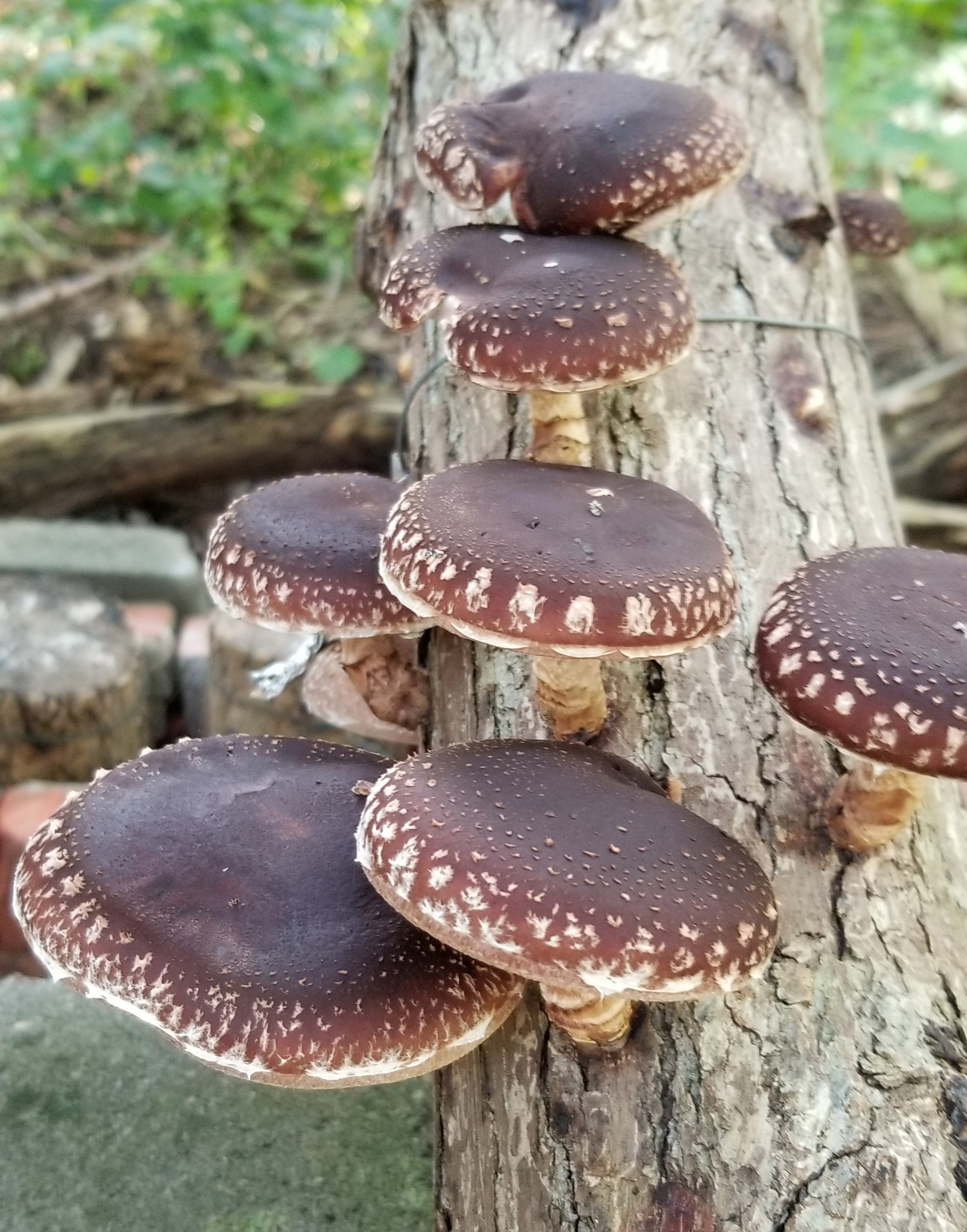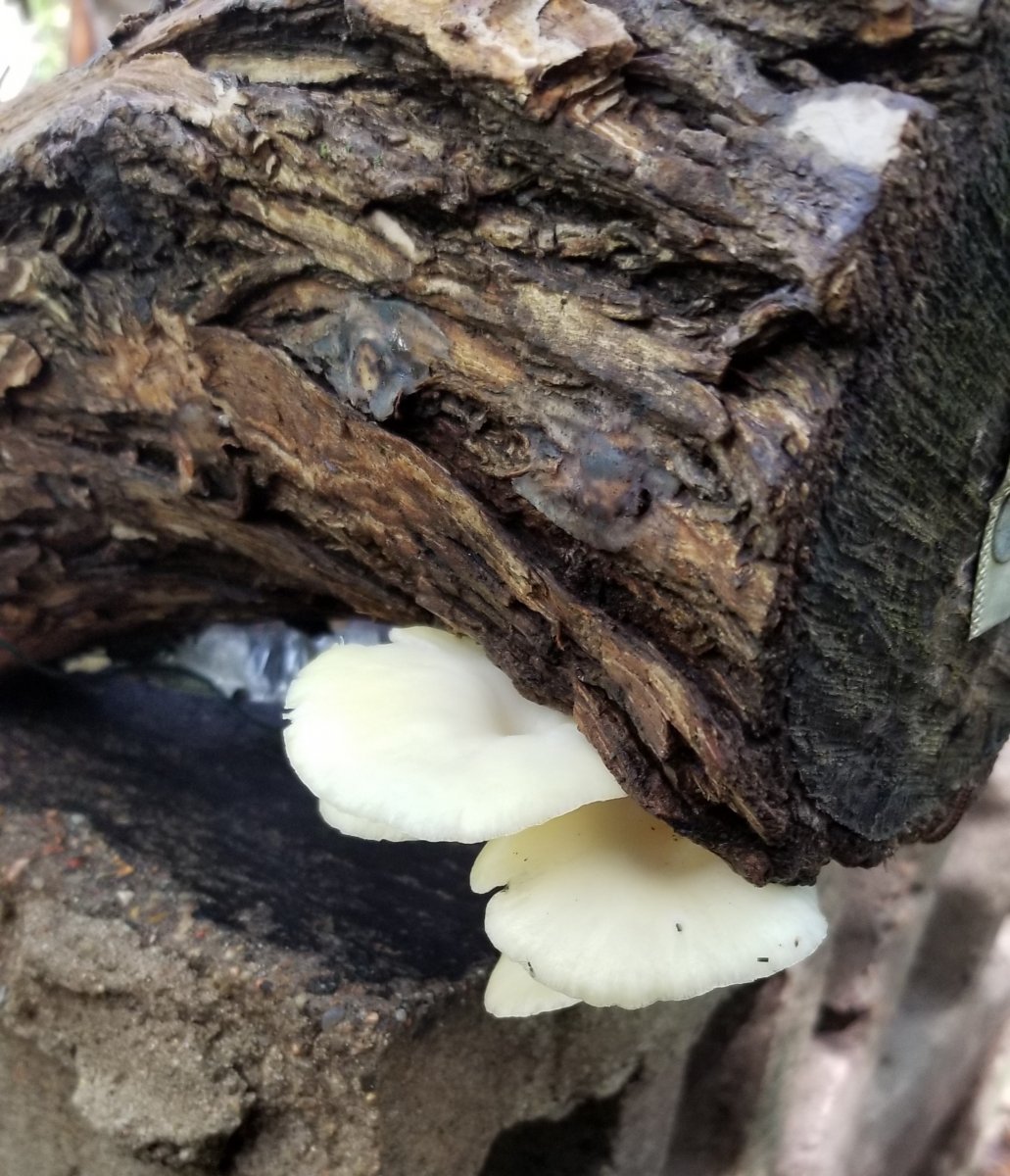
Most of us have probably heard of our friends or neighbors hunting for mushrooms, oftentimes combing woodlands for the elusive morel each spring. As luck would have it, fall is also a great time to find edible mushrooms growing in woodlands across Nebraska. Not all of us can make the time to join the hunt, but the good news is you can still satisfy your culinary curiosity by growing mushrooms at home.
Table of Contents
What are mushrooms?
Mushrooms are one of nature’s premier recyclers. They are technically macrofungi—a diverse group of organisms separate from plants and animals. In Nebraska, we can find fungi everywhere: soil, wood, and anywhere else there is decomposing plant matter. However, conditions must be just right for macrofungi to send up mature structures needed for reproduction. The structures that emerge are considered the “fruit” that can be harvested for fresh or dried use.
Mushrooms are low in calories, high in fiber, and contain many important vitamins and minerals. Some also have medicinal properties such as complex carbohydrates that strengthen the immune system.
What grows underground?
- Hyphae: thin strands of cells that make up the fungus body. The hyphae branch into a larger mass that is referred to as mycelium.
What grows above ground?
- Fruiting body: reproductive structure that will ultimately generate spores to establish new mycelium and hopefully, future mushrooms.
Where to grow?
Most of what we consider soil is actually mushroom matter mixed with dirt. The fungi mycelium breaks up plant fiber to decompose it, providing nutrients and conditions that allow for new plants to grow. The lack of mycelium in the soil is what causes desertification because dirt alone doesn't retain the water needed for plant life.
An upshot of growing your own mushrooms is it allows you to take part in all-natural recycling. The organic materials that can be used for mushroom growth are often things we discard or send to the burn pile. You can use logs, woodchips, compost, straw, and many other organic materials to grow mushrooms. We prefer to use logs, mainly because one “planting” can produce fruits for up five years or more. What you’ll need to find are tree limbs or logs free from other mushrooms or signs of decay, 4-6” in diameter, and about 3-5’ in length. The species of tree you will use depends on what mushrooms you want to grow. In general, hardwoods are best-suited for most varieties grown at home, and logs should “rest” for at least two weeks prior to planting.
Varieties to grow

Some mushrooms, like oyster and shiitake, are choice picks for first-time growers. The conditions needed to produce fruit are easy to create (shaded and moist), and the recommended host wood (oaks for shiitake and cottonwood or hackberry for oyster) are readily available. Additionally, many newcomers have better success with using “plug spawn.” These are hardwood dowels that have been inoculated with the mycelium of a specific mushroom species. Plugs are preferred as they require no special tools, are not easily damaged during shipping, produce consistent results in a variety of conditions, and they can lower the likelihood of other naturally-present fungi establishing on your logs.
Shiitake: Preferred hosts are oak trees. Alder, American beech, hornbeam, ironwood, sugar maple, and sweet gum are also recommended. Avoid using ash, black walnut, elm, and black locust.
Oyster: Preferred hosts are aspen, box elder, cottonwood, and willow. Hackberry and mulberry and also recommended. Avoid using all oaks when cultivating this species.
Planting or inoculation
The supplier you choose will provide detailed information about spacing between holes, required depth, and the number of plug spawn to plant per log. However, once the dowels are installed, each planting site should be sealed with food-grade wax. This is another level of protection against the establishment of other fungi and it helps keep the spawn from drying out. Keep in mind that logs should not be allowed to dry out. From the time you select your logs, to planting, and beyond, the better hydrated you can keep the growing site the quicker mushrooms will form.
Mushroom safety
As previously discussed, mushrooms can provide an array of health and nutritional benefits to the consumer. For this reason, many folks will soon find their interest piqued by foraging for wild mushrooms. There are no shortcuts to safety when eating wild mushrooms, proper identification is critical. You can start by reviewing a presentation prepared by the Nebraska Statewide Arboretum. You should also make efforts to go hunting with someone who has experience identifying and finding mushrooms. They'll gladly teach you how to do it safely, they are less inclined to show you their favorite hunting spots.
When cooking, follow this basic preparation method:
- Gently wash and brush off insects and debris, air or pat dry
- Heat a skillet on medium-low heat, slice mushrooms into thin strips
- When hot, add mushroom slices and cook over low heat, stirring occasionally until all the water is released from the mushroom and it is cooked off
- Increase the heat to medium-high and add butter or olive oil, saute until caramelized and golden brown
How to properly store mushrooms:
- Prepared sliced or diced mushrooms
- Blanch the mushrooms by adding to boiling salted water for up to 3 minutes
- Drain well and allow the surface to dry on newspaper or paper towels
- Store in airtight freezer bags for up to a year or more
- Prepared mushrooms can also be dried for long term storage